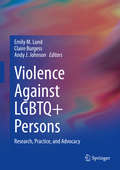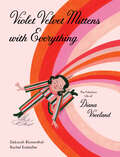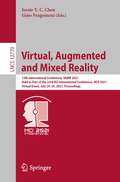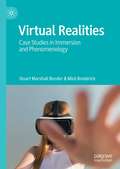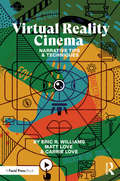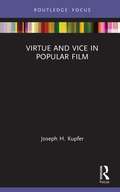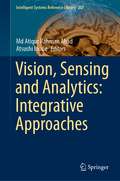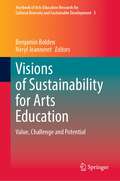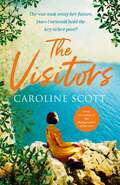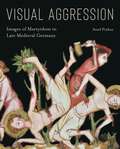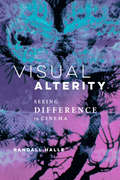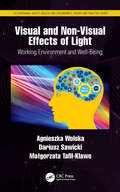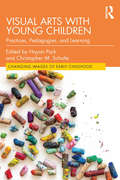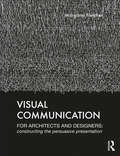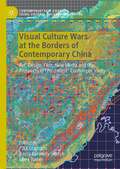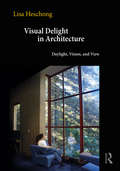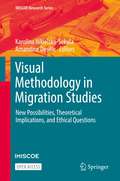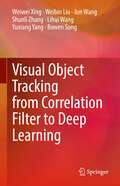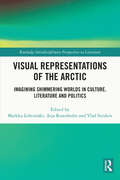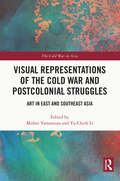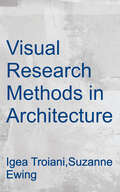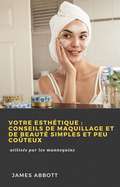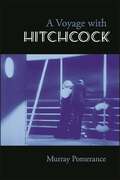- Table View
- List View
Violence Against LGBTQ+ Persons: Research, Practice, and Advocacy
by Emily M. Lund Claire Burgess Andy J. JohnsonAs violence against LGBTQ+ persons continues to be a pervasive and serious problem, this book aims to inform mental health providers about the unique needs of LGBTQ+ survivors of interpersonal and structural violence. Individual chapters analyze unique aspects of violence against specific subpopulations of LGBTQ+ persons in order to avoid ineffective and sometimes simplistic one-size-fits-all treatment strategies. Among the topics covered: Macro Level Advocacy for Mental Health Professionals: Promoting Social Justice for LGBTQ+ Survivors of Interpersonal Violence Intimate Partner Violence in Women’s Same-Sex Relationships Violence Against Asexual PersonsInvisibility and Trauma in the Intersex CommunitySexual and Gender Minority Refugees and Asylum Seekers: An Arduous JourneySexual and Gender Minority Marginalization in Military ContextsNavigating Potentially Traumatic Conservative Religious Environments as a Sexual/Gender Minority Violence Against LGBTQ+ Persons prepares mental health professionals for addressing internalized forms of prejudice and oppression that exacerbate the trauma of the survivor, in order to facilitate healing, empowerment, healthy relationships, and resilience at the intersection of sexual orientation, gender identity, gender expression, and diverse social locations. This is a valuable reference for psychologists, social workers, counselors, nurses, mental health professionals, and graduate students, regardless of whether they are preparing for general practice, treatment of LGBTQ+ clients, or treatment of survivors and perpetrators of various forms of violence.
Violet Velvet Mittens on Everything: The Fabulous Life of Diana Vreeland
by Deborah BlumenthalThis wonderful true story of iconic fashion editor Diana Vreeland teaches young readers that individuality is to be celebrated, and that even extraordinary dreams can come true.Violet Velvet Mittens with Everything captures the dramatic, spectacular world of famed fashion icon Diana Vreeland, whose legacy at Harper's Bazaar, Vogue, and the Costume Institute of the Metropolitan Museum of Art continues to influence the fashion world today. As a little girl in Paris, Vreeland loved to read and dance, and most of all dress up. Her love of originality persisted into her career in fashion, where her work was colorful, zany, and never, ever boring. Violet Velvet Mittens with Everything captures Vreeland's larger-than-life personality with an infectiously extravagant tone and style, while showing young readers that above dazzling and daring, being yourself makes the most lasting impact of all.
Virtual, Augmented and Mixed Reality: 13th International Conference, VAMR 2021, Held as Part of the 23rd HCI International Conference, HCII 2021, Virtual Event, July 24–29, 2021, Proceedings (Lecture Notes in Computer Science #12770)
by Jessie Y. C. Chen Gino FragomeniThis book constitutes the refereed proceedings of the 13th International Conference on Virtual, Augmented and Mixed Reality, VAMR 2021, held virtually as part of the 23rd HCI International Conference, HCII 2021, in July 2021. The total of 1276 papers and 241 posters included in the 39 HCII 2021 proceedings volumes was carefully reviewed and selected from 5222 submissions. The 47 papers included in this volume were organized in topical sections as follows: designing and evaluating VAMR environments; multimodal and natural interaction in VAMR; head-mounted displays and VR glasses; VAMR applications in design, the industry and the military; and VAMR in learning and culture.
Virtual Realities: Case Studies in Immersion and Phenomenology
by Stuart Marshall Bender Mick BroderickVirtual Realities presents a ground-breaking application of phenomenology as a critical method to explore the impact of immersive media. Specific case studies examine 360-degree documentary productions about trauma, virtual military simulations, VR exposure therapy for anxiety and posttraumatic stress disorder, and the emerging debate about regulating violent content in immersive media gaming. By addressing these texts primarily as experiences, Virtual Realities deploys an analytic and critical methodology that is sensitive to the bodily and cognitive impact of immersive media, especially via the body of an appropriately attentive researcher-critic. Virtual Realities provokes a rethinking of many of the taken-for-granted ideas and assumptions circulating in the field of immersive media. These include concepts of empathy, embodiment, the affective impact of textual and immersive properties on the users’ experience, as well as the “gee-whizz” mentality often associated with approaches to the medium. The case studies provide fresh engagement with immersive media such as cinematic VR at a time when dominant attitudes about the technology display an evangelical fascination with VR and other mixed realities as inexorably beneficial. Virtual Realities makes a compelling case for VR-phenomenology to be employed as a methodology by humanities scholars and also in cross-disciplinary applications of immersive media in fields such as psychology, human-computer interaction studies and the health sciences.
Virtual Reality Cinema: Narrative Tips and Techniques
by Eric R. Williams Carrie Love Matt LoveAward-winning cine-maVRicks Eric R. Williams, Carrie Love and Matt Love introduce virtual reality cinema (also known as 360° video or cine-VR) in this comprehensive guide filled with insider tips and tested techniques for writing, directing and producing effectively in the new medium. Join these veteran cine-VR storytellers as they break down fundamental concepts from traditional media to demonstrate how cine-VR can connect with audiences in new ways. Examples from their professional work are provided to illustrate basic, intermediate and advanced approaches to crafting modern story in this unique narrative space where there’s no screen to contain an image and no specific stage upon which to perform. Virtual Reality Cinema will prepare you to approach your own cine-VR projects via: Tips and techniques for writing, directing and producing bleeding-edge narrative cine-VR projects; More than a hundred photos and illustrations to explain complex concepts; Access to more than two hours of on-line cine-VR examples that you can download to watch on your own HMD; New techniques developed at Ohio University’s Game Research and Immersive Design (GRID) Lab, including how to work with actors to embrace Gravity and avoid the Persona Gap, how to develop stories with the Story Engagement Matrix and how to balance directorial control and audience agency in this new medium. This book is an absolute must read for any student of filmmaking, media production, transmedia storytelling and game design, as well as anyone already working in these industries that wants to understand the new challenges and opportunities of virtual reality cinema.
Virtue and Vice in Popular Film (Routledge Focus on Film Studies)
by Joseph H. KupferThis book addresses a prominent group of virtues and vices as portrayed in popular films to further our understanding of these moral character traits. The discussions emphasize the interplay between the philosophical conception of the virtues and vices and the cinematic representations of character. Joseph H. Kupfer explores how fictional characters possessing certain moral strengths and weaknesses concretize our abstract understanding of them. Because the actions that flow from these traits occur in cinematic contexts mirroring real world conditions, the narrative portrayals of these moral characteristics can further our appreciation of their import. Humility, integrity, and perseverance, for example, are depicted in Chariots of Fire, The Fabulous Baker Boys, and Billy Elliot, while the vices of envy, arrogance and vanity are captured in Amadeus, Whiplash, and Young Adult. This interdisciplinary work in philosophy and film criticism will be of great interest to scholars and students of film studies, philosophy of film, ethics, aesthetics, and popular culture.
Vision, Sensing and Analytics: Integrative Approaches (Intelligent Systems Reference Library #207)
by Md Atiqur Rahman Ahad Atsushi InoueThis book serves as the first guideline of the integrative approach, optimal for our new and young generations. Recent technology advancements in computer vision, IoT sensors, and analytics open the door to highly impactful innovations and applications as a result of effective and efficient integration of those. Such integration has brought to scientists and engineers a new approach —the integrative approach. This offers far more rapid development and scalable architecting when comparing to the traditional hardcore developmental approach. Featuring biomedical and healthcare challenges including COVID-19, we present a collection of carefully selective cases with significant added- values as a result of integrations, e.g., sensing with AI, analytics with different data sources, and comprehensive monitoring with many different sensors, while sustaining its readability.
Visions of Sustainability for Arts Education: Value, Challenge and Potential (Yearbook of Arts Education Research for Cultural Diversity and Sustainable Development #3)
by Benjamin Bolden Neryl JeanneretThis book stems from the 2019 meeting of the UNESCO UNITWIN international network for Arts Education Research for Cultural Diversity and Sustainable Development. It presents scholarly, international perspectives on issues surrounding arts education and sustainability that addresses the following questions: What value can the arts add to the education of citizens of the 21st century?; What are the challenges and ways forward to realize the potential of arts education in diverse contexts? The book discusses empirical research and exemplary practices in the arts and arts education around the world, presenting sound theoretical and methodological frames and approaches. It identifies policy implications at national, regional and global levels that cut across social, economic, environmental and cultural dimensions of sustainable development.
The Visitors
by Caroline ScottFrom the highly acclaimed author of The Photographer of the Lost, a BBC Radio 2 Book Club Pick, comes a tale of a young war widow and one life-changing, sun-drenched visit to Cornwall in the summer of 1923... Esme Nicholls is to spend the summer in Cornwall. Her late husband Alec, who died fighting in the war, grew up in Penzance, and she&’s hoping to learn more about the man she loved and lost. While there, she will stay with Gilbert, in his rambling seaside house, where he lives with his former brothers in arms. Esme is fascinated by this community of eccentric artists and former soldiers, and as she gets to know the men and their stories, she begins to feel this summer might be exactly what she needs. But everything is not as idyllic as it seems – a mysterious new arrival later in the summer will turn Esme&’s world upside down, and make her question everything she thought she knew about her life, and the people in it.Full of light, laughter and larger-than-life characters, The Visitors is a novel of one woman finally finding her voice and choosing her own path forwards. Praise for Caroline Scott: &‘A page-turning literary gem&’ The Times, Best Books of 2020 'A touching novel of love and loss' Sunday Times 'A beautifully written must-read' heat 'A gripping, devastating novel' Sarra Manning, RED &‘A powerful novel&’ Good Housekeeping &‘A heartbreaking read&’ Anita Frank 'Breathtaking exploration of loss, love and precious memories&’ My Weekly, Pick of the Month &‘Achingly moving and most beautifully written&’ Rachel Hore &‘This beautiful book packs a huge emotional punch&’ Fabulous &‘Drew me in from the first line and held me enthralled until the very end' Fiona Valpy &‘Quietly devastating' Daily Mail 'A compulsive, heart-wrenching read' Liz Trenow &‘Powerful&’ Woman & Home 'Page turning, mysterious, engrossing and compelling' Lorna Cook &‘A carefully nuanced, complex story&’ Woman&’s Weekly &‘Caroline Scott evokes the damage and desolation of the Great War with aching authenticity' Iona Grey &‘Poignant&’ Best 'Momentous, revelatory and astonishing historical fiction!' Historical Novel Society &‘Wonderful and evocative&’ Suzanne Goldring &‘Based on true events, this is a powerful story&’ Bella &‘Immersive, poignant, intricately woven&’ Judith Kinghorn &‘An evocative read&’ heat &‘The story left me breathless&’ Kate Furnivall &‘A poignant hymn to those who gave up their lives for their country and to those who were left behind&’ Fanny Blake 'I was utterly captivated by this novel' Isabelle Broom
Visual Aggression: Images of Martyrdom in Late Medieval Germany
by Assaf PinkusWhy does a society seek out images of violence? What can the consumption of violent imagery teach us about the history of violence and the ways in which it has been represented and understood? Assaf Pinkus considers these questions within the context of what he calls galleries of violence, the torment imagery that flourished in German-speaking regions during the fourteenth and fifteenth centuries. Exploring these images and the visceral bodily responses that they produced in their viewers, Pinkus argues that the new visual discourse on violence was a watershed in premodern conceptualizations of selfhood.Images of martyrdom in late medieval Germany reveal a strikingly brutal parade of passion: severed heads, split skulls, mutilated organs, extracted fingernails and teeth, and myriad other torments. Stripped from their devotional context and presented simply as brutal acts, these portrayals assailed viewers’ bodies and minds so violently that they amounted to what Pinkus describes as "visual aggressions." Addressing contemporary discourses on violence and cruelty, the aesthetics of violence, and the eroticism of the tortured body, Pinkus ties these galleries of violence to larger cultural concerns about the ethics of violence and bodily integrity in the conceptualization of early modern personhood.Innovative and convincing, this study heralds a fundamental shift in the scholarly conversation about premodern violence, moving from a focus on the imitatio Christi and the liturgy of punishment to the notion of violence as a moral problem in an ethical system. Scholars of medieval and early modern art, history, and literature will welcome and engage with Pinkus’s research for years to come.
Visual Aggression: Images of Martyrdom in Late Medieval Germany
by Assaf PinkusWhy does a society seek out images of violence? What can the consumption of violent imagery teach us about the history of violence and the ways in which it has been represented and understood? Assaf Pinkus considers these questions within the context of what he calls galleries of violence, the torment imagery that flourished in German-speaking regions during the fourteenth and fifteenth centuries. Exploring these images and the visceral bodily responses that they produced in their viewers, Pinkus argues that the new visual discourse on violence was a watershed in premodern conceptualizations of selfhood.Images of martyrdom in late medieval Germany reveal a strikingly brutal parade of passion: severed heads, split skulls, mutilated organs, extracted fingernails and teeth, and myriad other torments. Stripped from their devotional context and presented simply as brutal acts, these portrayals assailed viewers’ bodies and minds so violently that they amounted to what Pinkus describes as “visual aggressions.” Addressing contemporary discourses on violence and cruelty, the aesthetics of violence, and the eroticism of the tortured body, Pinkus ties these galleries of violence to larger cultural concerns about the ethics of violence and bodily integrity in the conceptualization of early modern personhood.Innovative and convincing, this study heralds a fundamental shift in the scholarly conversation about premodern violence, moving from a focus on the imitatio Christi and the liturgy of punishment to the notion of violence as a moral problem in an ethical system. Scholars of medieval and early modern art, history, and literature will welcome and engage with Pinkus’s research for years to come.
Visual Alterity: Seeing Difference in Cinema
by Randall HalleReconsidering the dynamics of perception Using cinema to explore the visual aspects of alterity, Randall Halle analyzes how we become cognizant of each other and how we perceive and judge another person in a visual field. Halle draws on insights from philosophy and recent developments in cognitive and neuroscience to argue that there is no pure "natural" sight. We always see in a particular way, from a particular vantage point, and through a specific apparatus, and Halle shows how human beings have used cinema to experiment with the apparatus of seeing for over a century. Visual alterity goes beyond seeing difference to being conscious of how one sees difference. Investigating the process allows us to move from mere perception to apperception, or conscious perception. Innovative and insightful, Visual Alterity merges film theory with philosophy and cutting-edge science to propose new ways of perceiving and knowing.
Visual and Non-Visual Effects of Light: Working Environment and Well-Being (Occupational Safety, Health, and Ergonomics)
by Agnieszka Wolska Dariusz Sawicki Malgorzata Tafil-KlaweThe introduction of artificial lighting extends the time of wakefulness after dark and enables work at night, thus disturbing the human circadian rhythm. The understanding of the physiological mechanisms of visual and non-visual systems may be important for the development and use of proper light infrastructure and light interventions for different workplace settings, especially for shift work conditions. Visual and Non-Visual Effects of Light: Working Environment and Well-Being presents the impact of lighting in the working environment on human health, well-being and visual performance. The physiological explanation of the visual and non-visual effects of light on humans which discusses the biological bases of image and non-image forming vision at the cellular level may be of particular interest to any professional in the field of medicine, physiology, and biology. It is one of the intentions of this book to put forward some recommendations and examples of lighting design which take into account both the visual and non-visual effects of light on humans. These may be of particular interest to any professional in the field of lighting, occupational safety and health, and interior design. "What effects on health can a light ‘overdose’ or light deficiency have? What is bad light? The authors of the monograph provide answers to these questions. Just as for a physicist, the dual nature of light comprises an electromagnetic wave and a photon, the duality of light for a physician comprises visual and non-visual effects." --------------------------------------------------------Prof Jacek Przybylski, Medical University of Warsaw "This is a unique publication in the field of lighting technology. The authors have skillfully combined both the technical and biomedical aspects involved, which is unprecedented in the literature available. As a result, an important study has been created for many professional groups, with a significant impact on the assessment of risks associated with LED sources." --------------------------------------------Prof Andrzej Zając, Military University of Technology, Warsaw
Visual Arts with Young Children: Practices, Pedagogies, and Learning (Changing Images of Early Childhood)
by Hayon Park Christopher M. SchulteFeaturing the work of leading scholar-practitioners, Visual Arts with Young Children raises critical questions about the situated nature of the visual arts and its education in early childhood. Innovative chapters explore the relationship of place to art practice and pedagogy, culturally-responsive and justice-oriented perspectives, as well as critical and reconceptualist approaches to materials, technology and media. Ideal for researchers and students of both early childhood education and arts integration programs, this volume is an essential step towards a deeper understanding of how visual arts are understood, valued and practiced in the early years.
Visual Communication for Architects and Designers: Constructing the Persuasive Presentation
by Margaret FletcherVisual Communication for Architects and Designers teaches you the art of designing a concise, clear, compelling and effective visual and verbal presentation. Margaret Fletcher has developed a reference manual of best practices that gives you the necessary tools to present your work in the best way possible. It includes an impressive 750 presentation examples by over 180 designers from 24 countries in North America, South America, Europe, the Middle East, Asia, Oceania and Africa. This book offers actionable advice to solve a variety of complex presentation challenges. You will learn how to: Understand differences in communication design, representation design and presentation design and know how to use these skills to your advantage; Structure the visual and verbal argument in your presentation; Design your presentation layouts, architectural competitions, boards and digital presentations; Manage issues related to the presentation of architectural and design ideas; Present yourself professionally. Your ability to communicate your design ideas to others is an invaluable and important skill. Visual Communication for Architects and Designers shows you how to develop and implement these skills and gain command of your presentations.
Visual Culture Wars at the Borders of Contemporary China: Art, Design, Film, New Media and the Prospects of “Post-West” Contemporaneity (Contemporary East Asian Visual Cultures, Societies and Politics)
by Paul Gladston Beccy Kennedy-Schtyk Ming TurnerThis edited collection brings together essays that share in a critical attention to visual culture as a means of representing, contributing to and/or intervening with discursive struggles and territorial conflicts currently taking place at and across the outward-facing and internal borders of the People’s Republic of China. Elucidated by the essays collected here for the first time is a constellation of what might be described as visual culture wars comprising resistances on numerous fronts not only to the growing power and expansiveness of the Chinese state but also the residues of a once pervasively suppressive Western colonialism/imperialism. The present volume addresses visual culture related to struggles and conflicts at the borders of Hong Kong, the South China Sea and Taiwan as well within the PRC with regard the so-called “Great Firewall of China” and differences in discursive outlook between China and the West on the significances of art, technology, gender and sexuality. In doing so, it provides a vital index of twenty-first century China’s diversely conflicted status as a contemporary nation-state and arguably nascent empire.
Visual Delight in Architecture: Daylight, Vision, and View
by Lisa HeschongVisual Delight in Architecture examines the many ways that our lives are enriched by the presence of natural daylight and window views within our buildings. It makes a compelling case that daily exposure to the rhythms of daylight is essential to our health and well-being, tied to the very genetic foundations of our physiology and cognitive function. It describes all the subtlety, beauty, and pleasures of well-daylit spaces and attractive window views, and explains how these are woven into the fabric of both our everyday sensory experience and enduring cultural perspectives. All types of environmental designers, along with anyone interested in human health and well- being, will fi nd new insights offered by Visual Delight in Architecture. The book is both accessible and provocative, full of personal stories and persuasive research, helping designers to gain a deeper understanding of the scientific basis of their designs, scientists to better grasp the real-world implications of their work, and everyone to more fully appreciate the role of windows in their lives.
Visual Methodology in Migration Studies: New Possibilities, Theoretical Implications, and Ethical Questions (IMISCOE Research Series)
by Amandine Desille Karolina Nikielska-SekulaThis open access book explores the use of visual methods in migration studies through a combination of theoretical analyses and empirical studies. The first section looks at how various visual methods, including photography, film, and mental maps, may be used to analyse the spatial presence of migrants. The second section addresses the processual building of narratives around migration, thereby using formats such as film and visual essay, and reflecting upon the ways they become carriers and mediators of both story and theory within the subject of migration. Section three focuses on vulnerable communities and discusses how visual methods can empower these communities, thereby also focusing on the theoretical and ethical implications of migration. The fourth section addresses the issue of migrant representation in visual discourses. Based on these contributions, a concluding methodological chapter systematizes the use of visual methods in migration studies across disciplines, with regard to their empirical, theoretical, and ethical implications. Multidisciplinary in character, this book is an interesting read for students and migration scholars who engage with visual methodologies, as well as practitioners, journalists, filmmakers, photographers, curators of exhibitions who address the topic of migration visually.
Visual Object Tracking from Correlation Filter to Deep Learning
by Weiwei Xing Weibin Liu Jun Wang Shunli Zhang Lihui Wang Yuxiang Yang Bowen SongThe book focuses on visual object tracking systems and approaches based on correlation filter and deep learning. Both foundations and implementations have been addressed. The algorithm, system design and performance evaluation have been explored for three kinds of tracking methods including correlation filter based methods, correlation filter with deep feature based methods, and deep learning based methods. Firstly, context aware and multi-scale strategy are presented in correlation filter based trackers; then, long-short term correlation filter, context aware correlation filter and auxiliary relocation in SiamFC framework are proposed for combining correlation filter and deep learning in visual object tracking; finally, improvements in deep learning based trackers including Siamese network, GAN and reinforcement learning are designed. The goal of this book is to bring, in a timely fashion, the latest advances and developments in visual object tracking, especially correlation filter and deep learning based methods, which is particularly suited for readers who are interested in the research and technology innovation in visual object tracking and related fields.
Visual Representations of the Arctic: Imagining Shimmering Worlds in Culture, Literature and Politics (Routledge Interdisciplinary Perspectives on Literature)
by Markku Lehtimäki Arja Rosenholm Vlad StrukovPrivileging the visual as the main method of communication and meaning-making, this book responds critically to the worldwide discussion about the Arctic and the North, addressing the interrelated issues of climate change, ethics and geopolitics. A multi-disciplinary, multi-modal exploration of the Arctic, it supplies an original conceptualization of the Arctic as a visual world encompassing an array of representations, imaginings, and constructions. By examining a broad range of visual forms, media and forms such as art, film, graphic novels, maps, media, and photography, the book advances current debates about visual culture. The book enriches contemporary theories of the visual taking the Arctic as a spatial entity and also as a mode of exploring contemporary and historical visual practices, including imaginary constructions of the North. Original contributions include case studies from all the countries along the Arctic shore, with Russian material occupying a large section due to the country’s impact on the region
Visual Representations of the Cold War and Postcolonial Struggles: Art in East and Southeast Asia (The Cold War in Asia)
by Midori Yamamura Yu-Chieh LiThe essays and artworks gathered in this volume examine the visual manifestations of postcolonial struggles in art in East and Southeast Asia, as the world transitioned from the communist/capitalist ideological divide into the new global power structure under neoliberalism that started taking shape during the Cold War. The contributors to this volume investigate the visual art that emerged in Australia, China, Cambodia, Indonesia, Korea, Okinawa, and the Philippines. With their critical views and new approaches, the scholars and curators examine how visual art from postcolonial countries deviated from the communist/capitalist dichotomy to explore issues of identity, environment, rapid commercialization of art, and independence. These foci offer windows into some lesser-known aspects of the Cold War, including humanistic responses to the neo-imperial exploitations of people and resources as capitalism transformed into its most aggressive form. Given its unique approach, this seminal study will be of great value to scholars of 20th-century East Asian and Southeast Asian art history and visual and cultural studies.
Visual Research Methods In Architecture
by Igea Troiani Suzanne EwingThis book offers a distinctive approach to the use of visual methodologies for qualitative architectural research. It presents a diverse selection of ways for the architect or architectural researcher to use their gaze as part of their research practice for the purpose of visual literacy. Its contributors explore and use, “critical visualizations,” which employ observation and socio-cultural critique through visual creations—texts, drawings, diagrams, paintings, visual texts, photography, film, and their hybrid forms—to research architecture, landscape design, and interior architecture. The visual methods intersect with those used in ethnography, anthropology, visual culture, and media studies. In presenting a range of interdisciplinary approaches, Visual Research Methods in Architecture opens up territory for new forms of visual architectural scholarship.
Votre esthétique : utilisés par les mannequins
by James AbbottNe vous fatiguez pas avec des relookings coûteux qui prennent du temps ! Dans ce guide, vous apprendrez les astuces les plus efficaces et les moins coûteuses pour vous transformer en mannequin ! Ces méthodes sont couramment utilisées par les plus grands mannequins du monde et peuvent être appliquées même par une novice en quelques minutes seulement. Voici le contenu qui est inclus : - Des astuces simples - Des méthodes à faible coût - L’application rapide de maquillage en quelques minutes - Avoir l'air d'un mannequin - Le meilleur maquillage pour toute application
A Voyage with Hitchcock
by Murray PomeranceFollowing from An Eye for Hitchcock and A Dream for Hitchcock, this third volume of reflections upon Alfred Hitchcock's work gives extensive meditations on six films: Psycho, The 39 Steps, The Birds, Dial M for Murder, Rich and Strange, and Suspicion. Murray Pomerance's sources come from a wide territory of interest, including production study, philosophy, cultural history, and more. The book is written as an homage to, and in many ways address to, not only the story content of these films but, more importantly, their overall filmic texture, which involves compositions, visual nuances, sounds, rhythms, and Hitchcock's unique treatments of human experience. The voyage theme plays a key—and moving—role in all the films discussed here.
